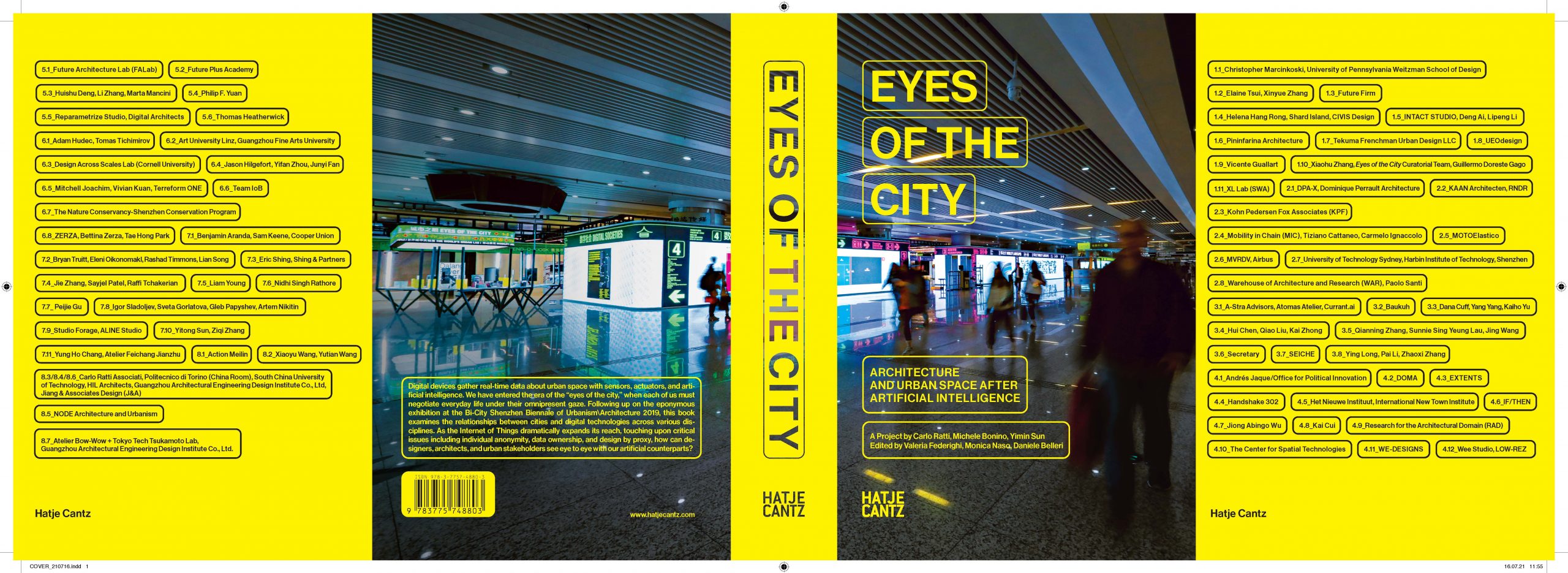
Title:
Eyes of the City:
Architecture and Urban Space after Artificial Intelligence
Editors:
Valeria Federighi, Monica Naso, and Daniele Belleri
2021
Federighi, Valeria, Monica Naso, and Daniele Belleri, eds. 2021. Eyes of the City: Architecture and Urban Space after Artificial Intelligence. Berlin: Hatje Cantz.
ISBN: 978-3775748803
Digital devices gather real-time data about urban space with sensors, actuators, and artificial intelligence. How can designers, architects, and urban stakeholders see eye to eye with our artificial counterparts? Under their omnipresent gaze, we have entered the era of the “eyes of the city.” Following up on the eponymous exhibition at the Bi-City Shenzhen Biennale of Urbanism/Architecture 2019, jointly curated by Carlo Ratti Associati, Politecnico di Torino and South China University of Technology, the book examines the relationships between cities and digital technologies across various disciplines.
“In the next few years, thanks especially to the recent advances in artificial intelligence, we are about to reach an unprecedented scenario, the most radical development in the evolution of the Internet of Things: architectural space is acquiring the full ability to “see”. Imagine that any room, street or shop in our city can sense you, and autonomously respond to your presence. With [Jane Jacob’s] paradigm of the “eyes on the street”, it was the people who looked at other people or the city, and interpreted its mechanisms. In this new scenario, it will not be not only the people, but also the buildings and streets themselves that observe and react as urban life unfolds in front of them.”
The book challenges the traditional notion of “exhibition catalogue”, crossing the three temporal and conceptual dimensions that were also tackled by the exhibition as a whole. As visible from its spine, the book is composed of three parts, which loosely represent the different laboratories of the exhibition: the curatorial work that preceded it, the open debate that accompanied it and the content that made it relevant. Overall, the book adopts Eyes of the City as a trans-scalar and multidisciplinary interpretative key for rethinking the city as a complex entanglement of relationships.
Link: https://www.hatjecantz.de/eyes-of-the-city-7957-1.html
Link 2: http://eyesofthecity.net/




